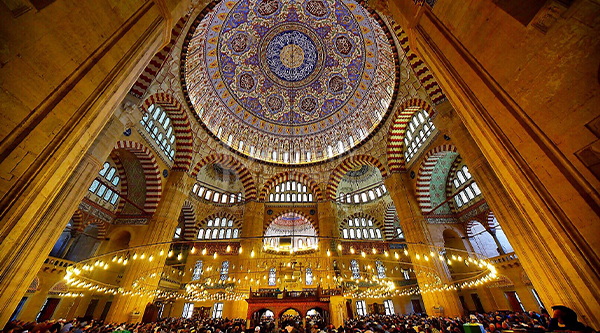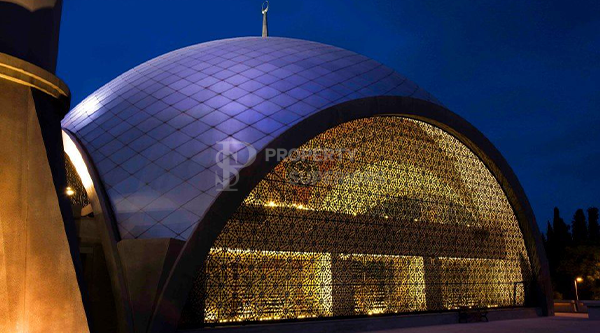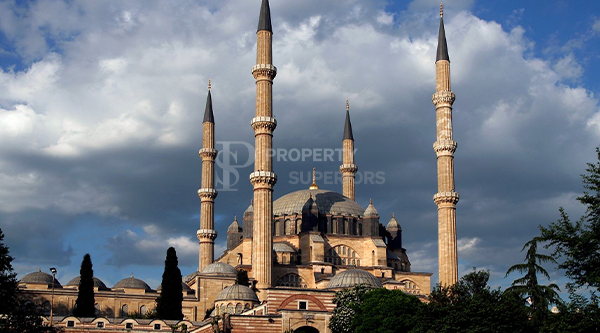
The many architectural styles seen in Turkey are one reason vacationing there is not only enjoyable but also educational. The variety is astounding, ranging from the wooden, platform stilt homes in the Northeast to the whitewashed homes along the Aegean coast.
In addition to the Greco-Roman cities like Ephesus with its iconic Celsus Library and Roman terrace homes, let's not overlook the ancient cave churches of Cappadocia that were created by humans.
The variation is not exceptional because several civilisations have dominated these territories throughout history and each has left its imprint. The Ottoman and Seljuk architectural styles, however, are particularly well-regarded in Turkey.
Turkish Ottoman Architecture
The Ottomans were masters at many things, including creating iconic structures that drew attention from all directions. They were influenced by many different architectural styles, including as Islamic and Byzantine architecture, but they eventually developed their own distinctive appearance that secured their position in architectural history books.

Palaces, water features, and bridges are among of their outstanding works that are still surviving today, but adoration is focused more on their mosques, which have elaborate designs most appropriate for a place of prayer.
Even though they were the dominant rulers of Bursa and Edirne in the 14th century, when they first gained a reputation for incredible architecture, it would take them many more years to develop the structures that have withstood the test of time to this day.
However, Mimar Sinan is the only Ottoman architect to have acquired renown and acclaim on a global scale. As the principal royal architect for three sultans in the 16th century, his innovative work maintained him in good stead.
His legacy is the Suleymaniye mosque in Istanbul, which is a UNESCO World Heritage Site. He is credited with creating more than 300 structures. Numerous of his disciples went on to create magnificent structures throughout the Ottoman Empire, demonstrating his impact both at the time and for future generations.
Sinan was different from other architects of his day in that he actively impacted trends. He never settled with the conventional type, which was just domed; instead, he constantly tried to construct the greatest landmark he could, with practicality and safety as his two main considerations.
The development of Ottoman architecture came to an abrupt halt after Mimar Sinan. No one was able to match his level of excellence, despite numerous attempts. Indeed, Mimar Sinan left behind a legacy that even the sultans could only imagine.
The Sultan Ahmet Blue Mosque and Topkapi Palace, which served as the Ottomans' first residence after they entered Constantinople, are both located in Istanbul's historic district, making it the ideal spot in Turkey to view Ottoman architecture.
After seeing it, visit the Dolmabahce Palace in the Besiktas neighborhood.The baroque and western-style building of this penultimate residence of the Ottoman Dynasty before their dissolution demonstrates the differences in architectural tastes between the 16th and 19th centuries.
Small towns like Beypazari and the UNESCO World Heritage site of Safranbolu show Ottoman architecture from the lower ranks of society, distant from the splendor of the sultans. Similarly, UNESCO nominated Bursa and the dwellings Cumalikizik to its list of world historic sites on the grounds that they are the best examples of rural Ottoman life from the 14th century onward.
Turkish Seljuk Architecture
The Seljuk empire was extremely powerful before the Ottomans came to power, dominating several nations throughout the Middle East and into what is now the heartland of Turkey. They also enjoyed constructing large, ornate structures, many of which may still be seen today.
Although many historians claim that the Persians, Byzantine, and Armenian styles of architecture greatly impacted them, their style is unique and unmistakably different. The best method for any traveler to observe samples of their craftsmanship is to go about the caravanserais that are located on the highways surrounding Konya city, where they are well recognized for having left their imprint.

These structures, which served as rest stops for traveling salespeople, were constructed at strategic locations along roadways at the projected 30-kilometer daily travel distance. Considering they had motorized transportation, this distance was considerable.
Residents were protected by tall doors with ornate décor since bandits were common in those days. Upon entering, a number of rooms, including a prayer room, dining, sleeping, and bathing quarters, as well as an area for animals, led off the courtyard. There were blacksmiths, veterinarians, tailors, and cobblers in the bigger, busier caravanserais, ensuring that nobody's journey was delayed by bad luck.
The caravanserais are so revered in the historical community that 40 of them, which are located along the route from Denizli to Dogubeyazlt, have been included to the tentative list of UNESCO World Heritage Sites. Their goal is to provide people with a place to eat, sleep, wash, and worship, which is reminiscent of nomadic times.
If you're in Cappadocia, you should see the Saruhan caravansary, which has a magnificent and intricate entrance, right outside of Goreme town center. The structure exhibits typical Seljuk architecture flawlessly, despite the fact that it currently has two colors of stone because portions of it were rebuilt!
Related posts:
"Smart Homes" are homes that have the latest technology. All of the parts of the house are controlled by technology, so they are fully automated. That means you can control everything in your home with the touch of a button,...
The process of interior design supervision involves the designer overseeing the execution of all tasks, including design, selecting personnel and materials, renovating existing spaces, and completing the project as planned.




 New provisions for obtaining Turkish citizenship through real estate ownership
New provisions for obtaining Turkish citizenship through real estate ownership
 Turkish Real Estate Rental Law 2024
Turkish Real Estate Rental Law 2024
 Ways to obtain Turkish citizenship through investment 2024
Ways to obtain Turkish citizenship through investment 2024
 How to choose an ideal apartment in Turkiye?
How to choose an ideal apartment in Turkiye?
 Turkish passport... Extraction method and fees 2024
Turkish passport... Extraction method and fees 2024
